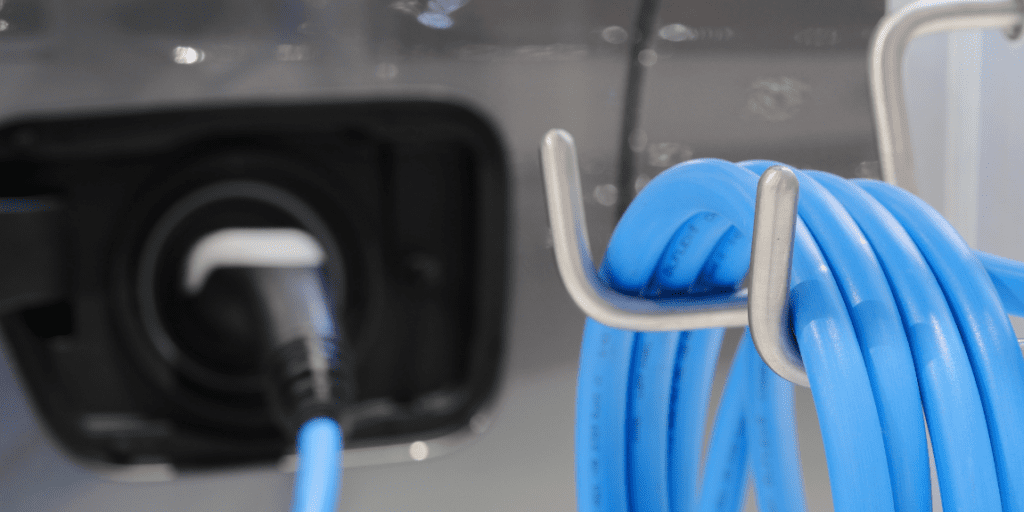

Fleet electrification is revolutionizing the transportation and construction industries by replacing traditional internal combustion engine vehicles with electric alternatives. This shift not only aims to reduce carbon emissions and enhance sustainability but also offers significant cost savings on fuel and maintenance.
Adopting fleet electrification can improve operational efficiency, compliance with emerging regulations, and a stronger, forward-thinking corporate image.
Understanding the fundamentals and advantages of fleet electrification can empower businesses to make informed decisions that drive progress and profitability in a rapidly evolving landscape.
Fleet electrification involves converting a company’s vehicle fleet—such as cars, trucks, and construction machinery—from traditional internal combustion engines (ICEs) to electric powertrains.
This process encompasses not only the selection of electric vehicles (EVs) but also includes the development of supporting infrastructure, management systems, and operational strategies to maximize efficiency and sustainability.
Here’s a detailed breakdown:

Rapid Chargers: High-capacity chargers that significantly reduce charging time, making them suitable for quick turnarounds.
Fleet electrification is more than just swapping out old vehicles for new ones; it’s a comprehensive approach requiring thoughtful planning, technology investment, and a commitment to sustainability. By carefully implementing these components, businesses can enjoy the benefits of a modern, electric fleet.
While fleet electrification offers numerous advantages, it also presents several challenges. One key challenge is the high upfront cost of purchasing electric vehicles and developing the necessary charging infrastructure. Additionally, the availability and accessibility of public charging stations can pose logistical issues, especially for fleets covering extensive distances.
The limited range of certain EVs compared to traditional internal combustion engine vehicles can also be a constraint for long-haul operations. Furthermore, businesses may need to invest in educating their workforce on new technologies and driving practices to maximize efficiency and safety.
Navigating these hurdles requires strategic planning and a commitment to innovation. Still, the long-term benefits can significantly outweigh the initial obstacles.
Fleet electrification offers a multitude of benefits spanning economic, environmental, and operational aspects. Here’s a closer look at the advantages:
Switching to electric vehicles can lead to significant cost savings over time. Although the initial investment may be high, the lower running costs associated with electricity versus traditional fuels can result in substantial savings. Furthermore, EVs have fewer moving parts than internal combustion engines, reducing maintenance costs and vehicle downtime.
Government incentives, tax credits, and grants for EV purchases and infrastructure development can also offset some upfront costs, making electrification more financially attractive.
One of the most compelling reasons for fleet electrification is its potential to mitigate environmental impact. EVs produce zero tailpipe emissions, which helps in reducing air pollution and greenhouse gas emissions. This transition is particularly crucial for urban areas where air quality is a pressing concern.
By decreasing reliance on fossil fuels, businesses contribute to global efforts in combating climate change, enhancing corporate social responsibility and sustainability credentials.

Fleet electrification enhances operational efficiency through advanced fleet management systems. Telematics and remote diagnostics can optimize routes, predict maintenance needs, and minimize downtime, ensuring smoother operations.
In terms of energy costs, electricity is generally cheaper and more stable than gasoline or diesel, making long-term financial planning more predictable. Additionally, optimally scheduled charging can take advantage of lower off-peak electricity rates, further reducing costs.
Adopting fleet electrification can significantly boost a company’s reputation and marketability. Consumers, partners, and investors view companies that commit to sustainability more favorably.
This proactive approach to environmental responsibility can open up new business opportunities and positions the company as an industry leader in innovation and sustainability.
Enhanced brand image and improved customer trust can ultimately lead to increased market share and profitability.
Global and regional regulations are increasingly mandating reductions in carbon emissions and encouraging the uptake of electric vehicles. Fleet electrification ensures that businesses stay ahead of regulatory mandates, avoiding potential fines and benefiting from compliance incentives. Staying compliant saves costs associated with non-compliance and prepares companies for future regulations, making long-term planning more robust.
Several factors should be considered when electrifying your fleet to ensure a smooth and effective transition. Key considerations include:
Fleet electrification strategy presents a multifaceted solution that addresses economic viability, environmental sustainability, and operational efficiency of fleet management.
While requiring careful planning and a strategic approach, the transition offers a substantial return on investment through cost savings, improved brand reputation, and regulatory compliance.
By analyzing operational profiles, infrastructure readiness, and financial implications, businesses can make informed decisions that align with their long-term sustainability goals.
Ready to transform your fleet and take a significant step towards a greener, more efficient future?
Contact our team today to explore tailored fleet management solutions for your business and begin your journey toward innovation and sustainability.
Simply put—fleet electrification refers to the process of replacing traditional internal combustion engine vehicles within a company’s fleet with electric vehicles (EVs). This transition aims to improve operational efficiency, reduce environmental impact, and comply with evolving global and regional regulations.
Fleet electrification aims to enhance operational efficiency, reduce environmental impact, and ensure regulatory compliance. By transitioning to electric vehicles, companies can achieve significant cost savings, improve air quality, and demonstrate a commitment to sustainability. This shift also positions organizations as leaders in innovation and corporate responsibility.
Fleet electrification is important because it significantly reduces carbon emissions and air pollutants, directly contributing to the fight against climate change and improving public health. Additionally, it enables companies to achieve cost savings through lower fuel and maintenance costs, while bolstering their reputation as forward-thinking and environmentally responsible entities.
Never miss an insight. We’ll email you when new articles are published on this topic.
